

Ben Zachariah
CarExpert's top five ute reviews of 2025
7 Hours Ago
The Toyota HiLux Rogue is the version of Australia's top-selling vehicle pitched at a weekend-warrior or family buyer. True to form, it does the task well without really excelling at much.
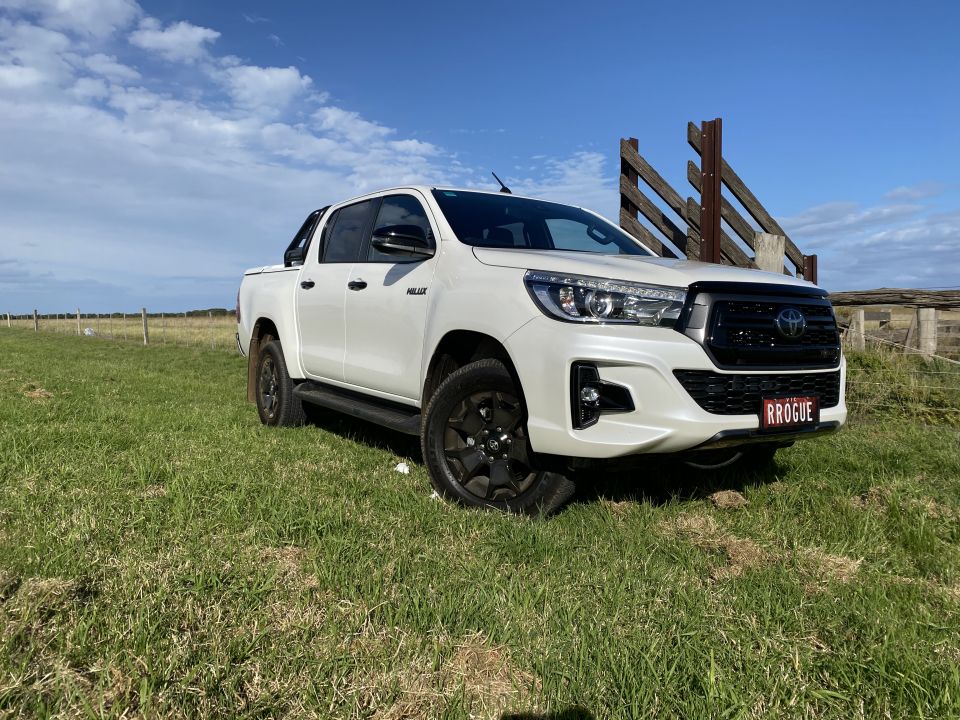


Senior Contributor
New from
$23,590
excl. on-roads

Senior Contributor
New from
$23,590
excl. on-roads


Senior Contributor
New from
$23,590
excl. on-roads

Senior Contributor
New from
$23,590
excl. on-roads
Quickly see how this car stacks up against its competition. Select any benchmark to see more details.
Where expert car reviews meet expert car buying – CarExpert gives you trusted advice, personalised service and real savings on your next new car.
The Toyota HiLux is Australia’s top-selling vehicle, and aside from its LandCruiser stablemate it’s hard to find a vehicle with a more loyal buyer base.
While the HiLux’s strong points have traditionally been its toughness off the beaten path, ability to lug loads, and the breadth of its maker’s dealer network, Toyota has also identified the growing demand for more luxurious ‘lifestyle’ focused utes.
While it’s largely marketing waffle, Toyota’s local division calls the Rogue a “perfect expression of a vehicle designed for adventurous weekends away while being equally at home for the weekday commute into the city”.
This quote gives you some insights into what the company is trying to do. To give some context, the Rogue sits alongside the more off-road-oriented Rugged X HiLux, which gets rock rails, bash plates, recovery points, a light bar and other such features.
Eschewing this, the Rogue gets features that differentiate it from the SR5 grade such as new bumpers, a sports bar bolted into the tub base, a hard tonneau cover synced with the key fob, marine-grade carpeting in the tray that’s velcroed down so as to be easily pulled out, a rather nice black interior headliner, and a white-rimmed instrument cluster.
Do you really want to live with a HiLux every day? And does it stack up as a more butch alternative to your family SUV that’s required to tow the family boat or head to the caravan park from time to time?




The Rogue costs $62,490 before on-road costs, or $66,991 drive-away when priced up on Toyota’s website. That’s about $3300 more than a volume-selling SR5 dual-cab with the automatic and the optional leather trim fitted, and $2000 cheaper than a Rugged X.
Its most obvious competitors come from Ford: the Ranger Wildtrak for $63,890 before on-roads, or an FX4 for $61,540.
Nissan’s Navara N-Trek Warrior will cost you $65,990 before on-road costs, and Volkswagen’s class-unique V6 Amarok TDI550 Highline retails for $61,090 before on-roads.
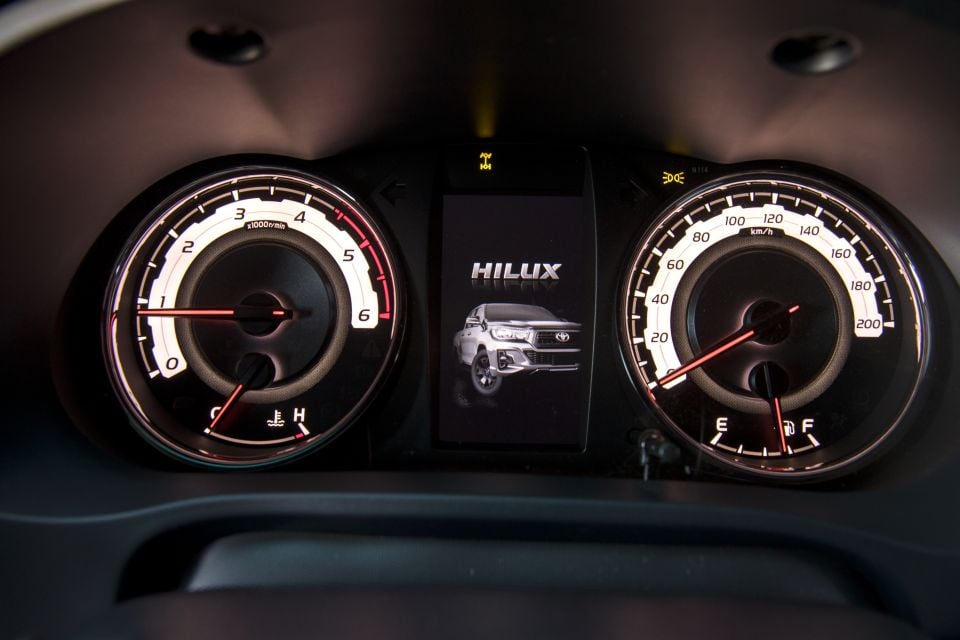
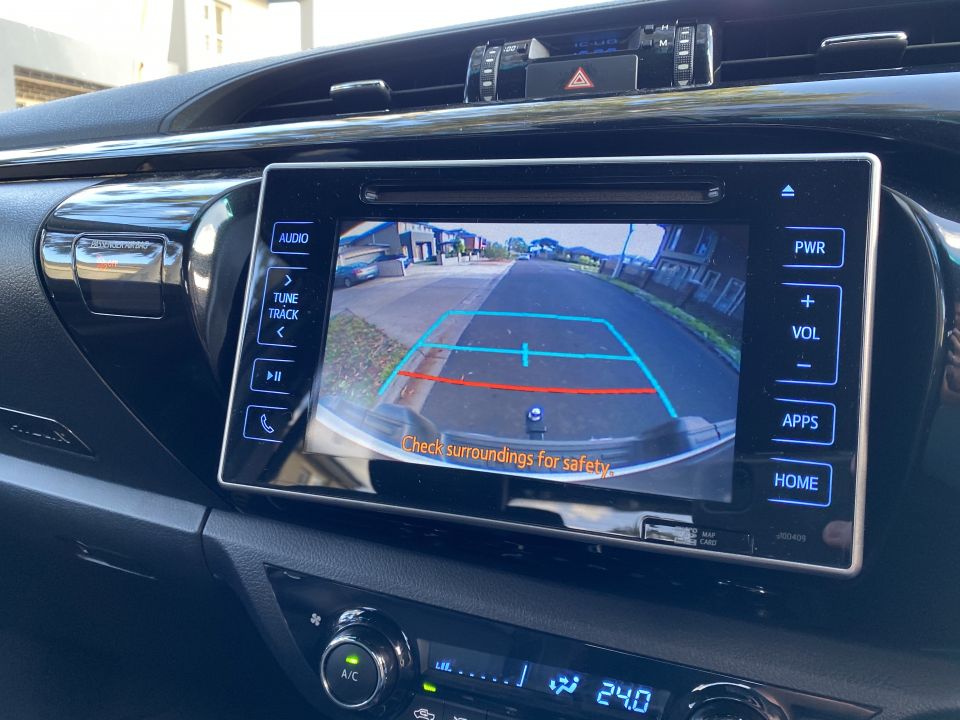
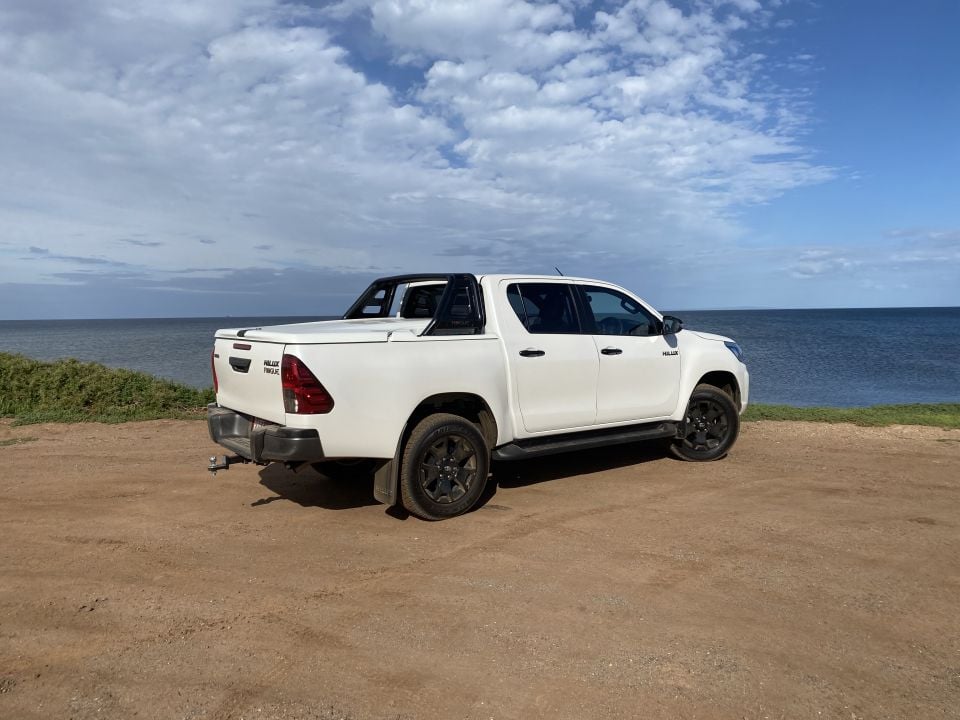
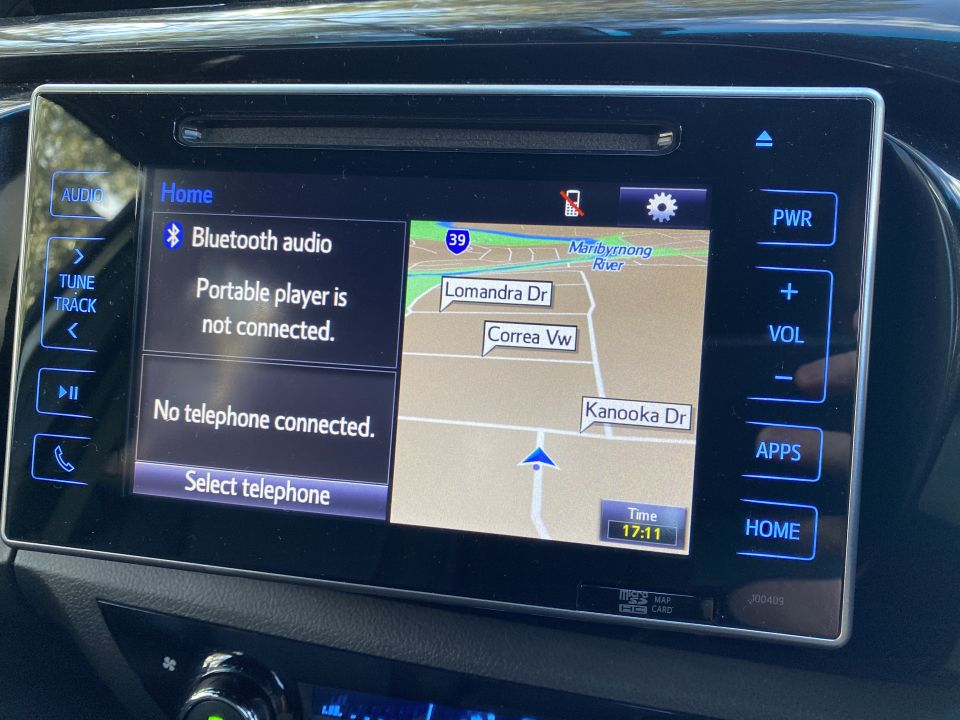
Buy your new car without the stress. It's fast, simple and completely free.

Great service from Travis and team, second time I have used this business would not hesitate to recommend them to anyone
Craig C.
Purchased a Ford Ranger in Sunshine Coast, QLD
CarExpert helped Craig save thousands on his Ford Ranger, now let us save you on your next new car.
Find a dealOn the outside you get body-coloured bumpers; LED headlights, taillights and fog lights; dark-tinted rear windows and side steps; a black sports bar bolted into the marine-carpet-lined tub, a lift-up hard tonneau that unlocks and locks with the key fob and which has a “dust defence kit”; a black tailgate handle, mirrors and door handles; a tow-ball with seven-pin flat wiring harness; and 18-inch black alloy wheels.
Inside there are leather-accented perforated seats; front heated seats with eight-way power-adjustability for the driver; a “premium” leather wheel and gear shifter; carpet floor and mats; a chilled cooled box; gloss black trims; climate control; proximity key fob with button start; a 220V power socket in the console; a 7.0-inch touchscreen; satellite navigation; reversing camera; digital radio; Bluetooth; and six speakers.
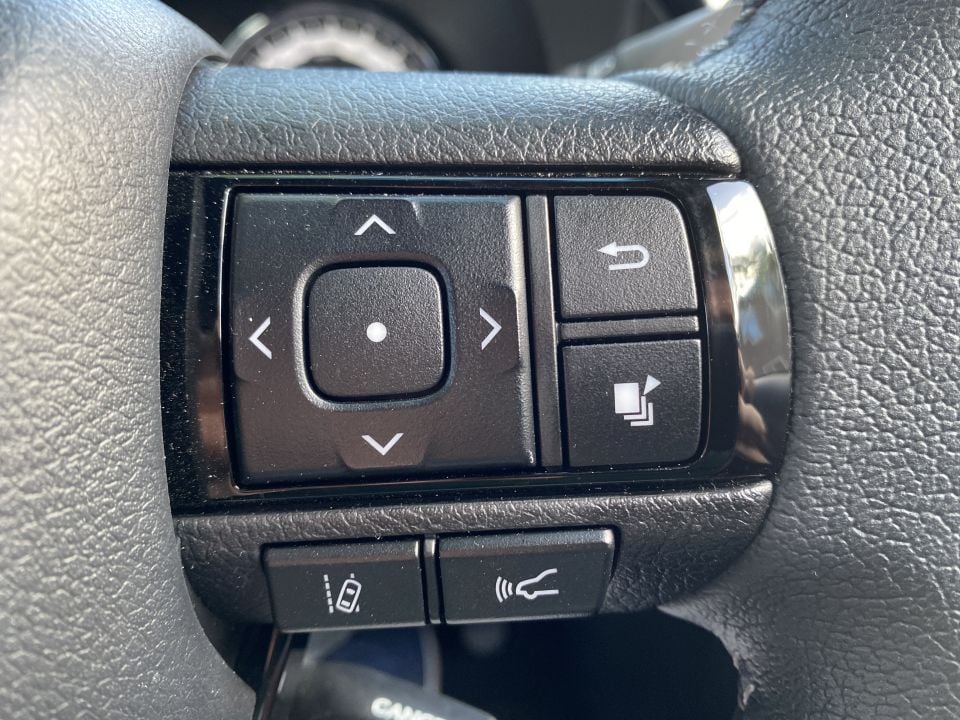
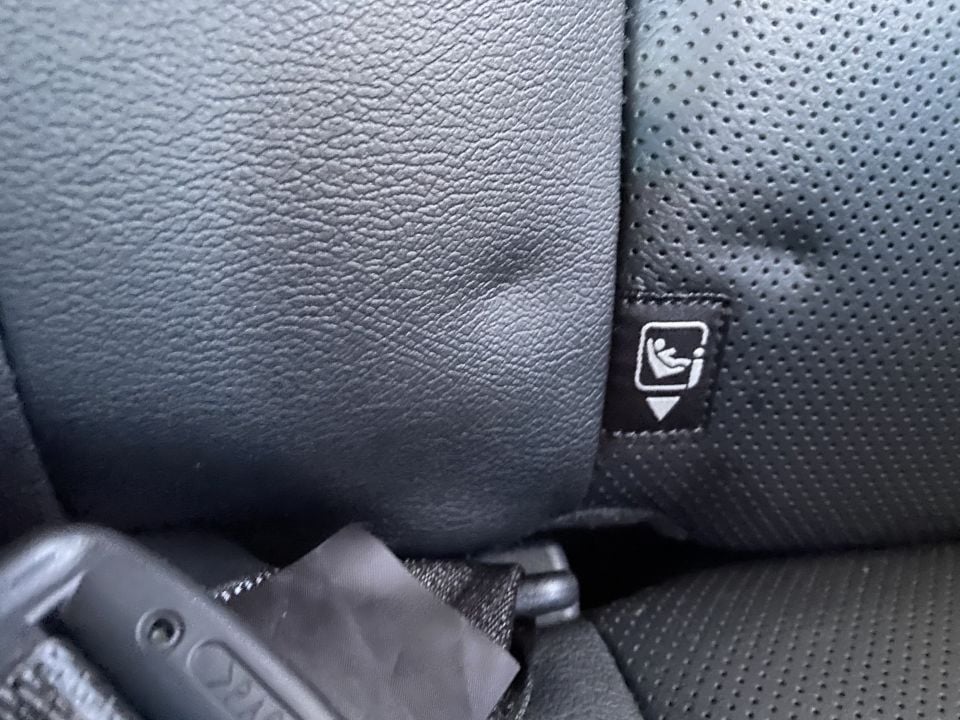
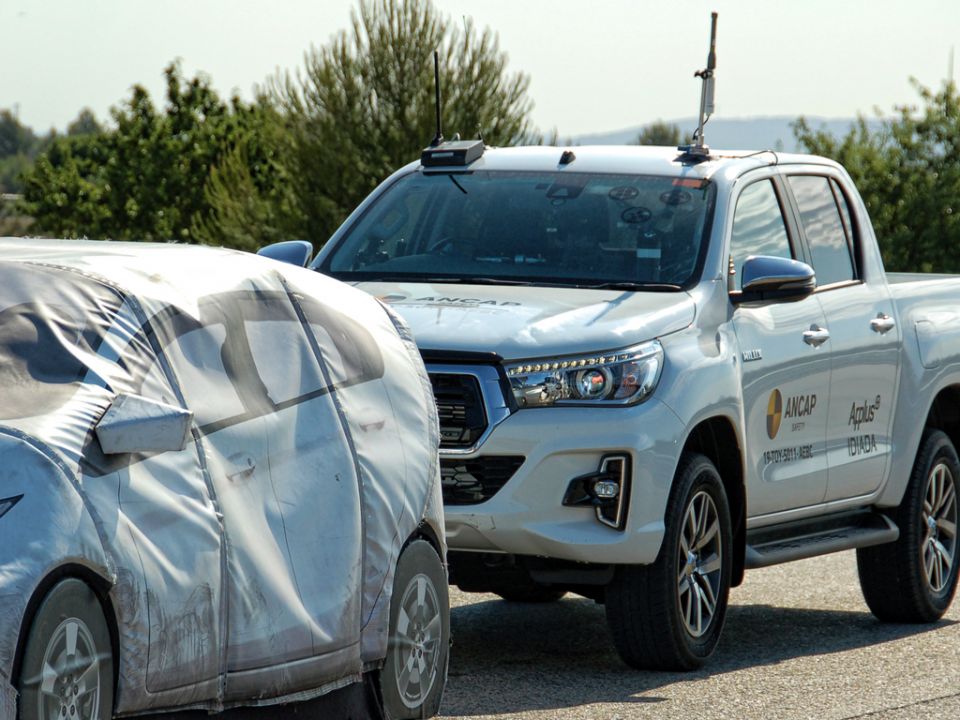
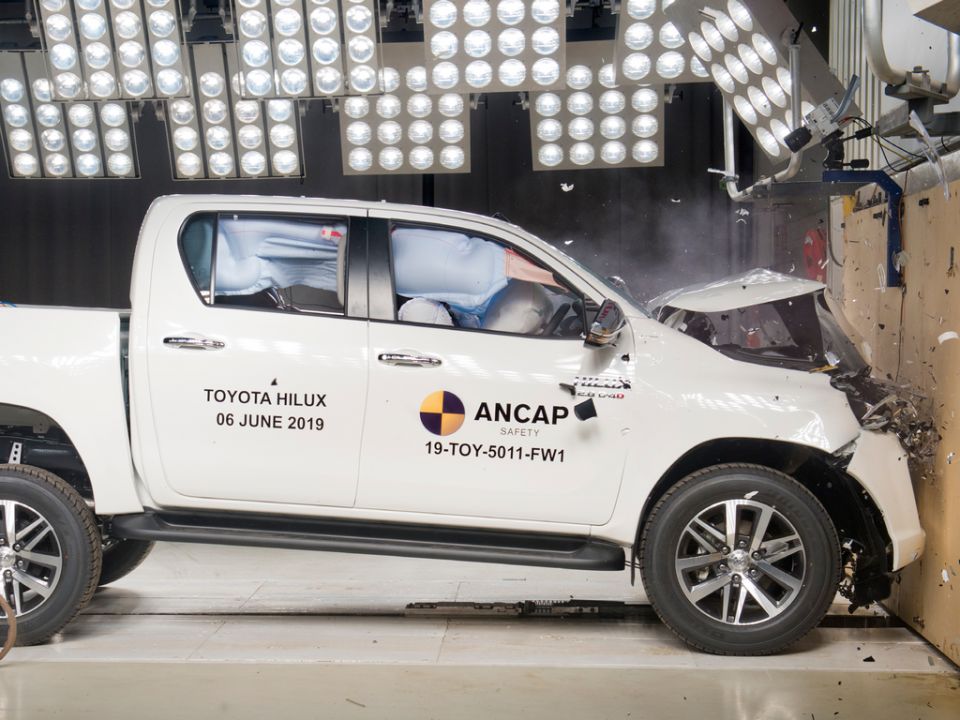
Sure is.
Safety features include six airbags, plus driver-assistance including a pre-collision alert system with autonomous emergency braking that works at all legal speeds and which should sense pedestrians and cycles, road-sign detection, lane-departure alert (but not steering assist), and active cruise control.
The only handy feature missing is a blind-spot monitoring system.
Independent crash-tester ANCAP awarded the HiLux a five-star rating against the latest 2019 protocols.
The Toyota managed an impressive 96 per cent score for adult occupant protection, 87 per cent for child occupant protection (good for those using this as a second family car), 88 per cent for vulnerable road user protection, and 78 per cent for its safety assist features.
The bad old days of unsafe utes being your only choice need no longer apply to you, and the top-selling HiLux is emblematic of this shift.
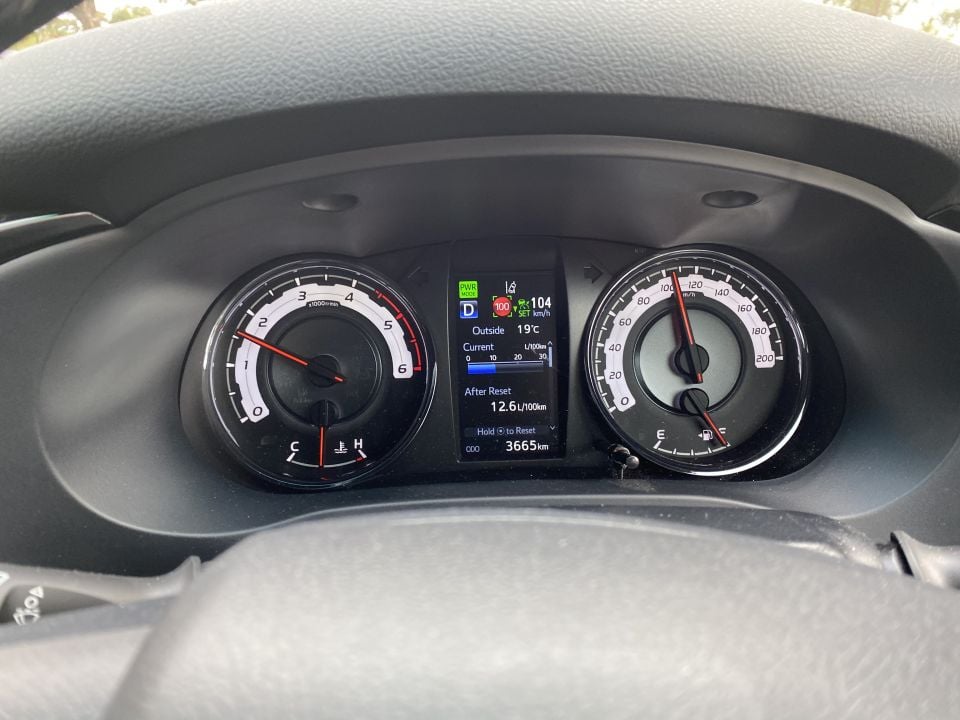

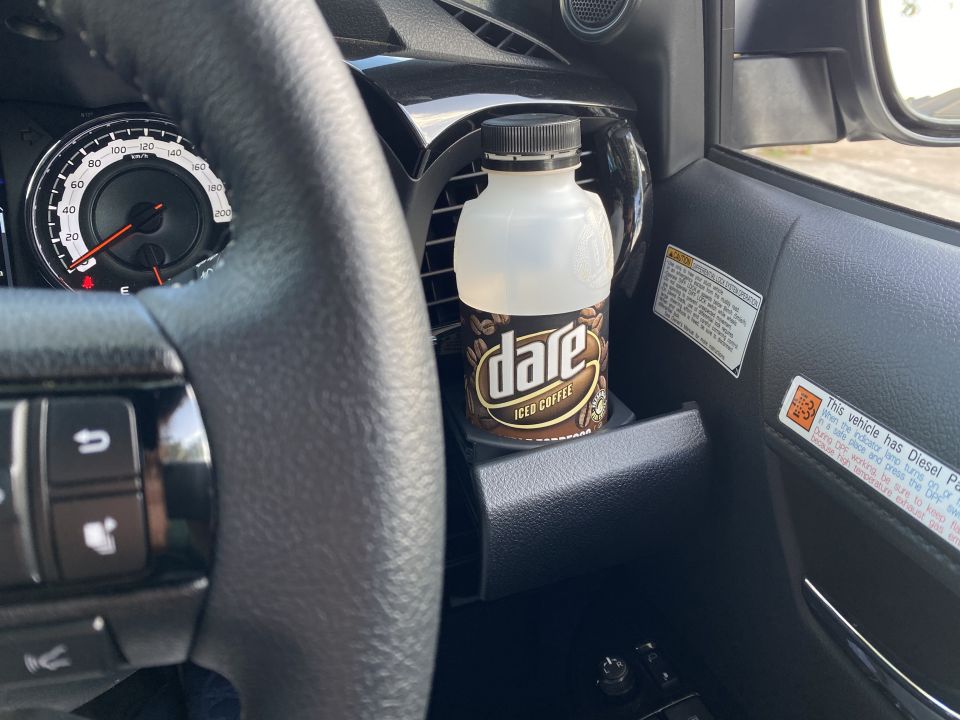
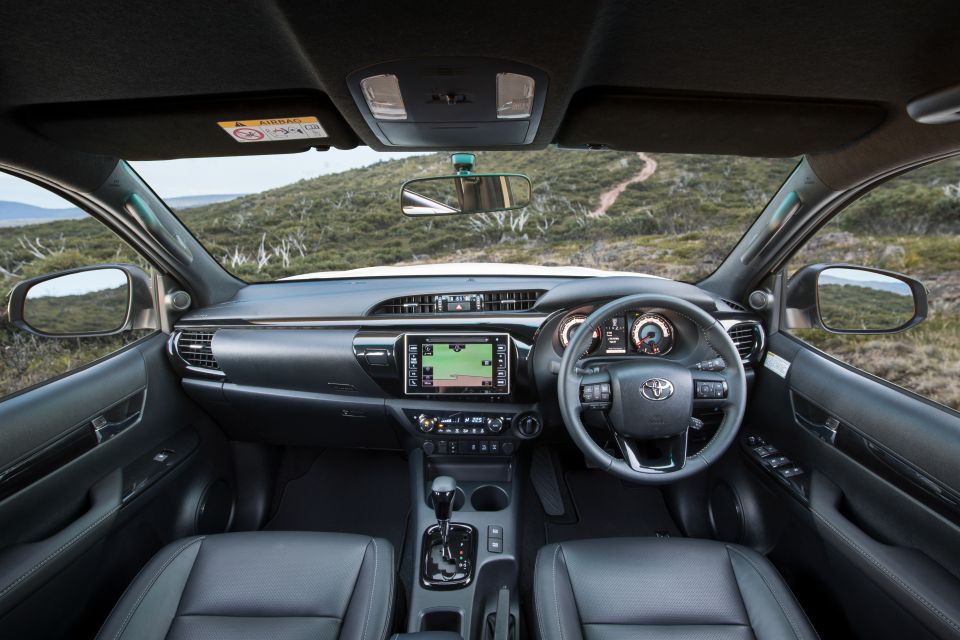
Most pickups either have cheap plasticky cabins or flawed ergonomics, but the HiLux generally avoids both pitfalls. The seats are comfortable enough and nicely trimmed, and crucially for me the steering wheel has both rake and reach adjustment – something the Navara, D-Max, and Ranger do not.
The black headlining, glossy plastics, and white gauges bookending the TFT digital display (frustratingly lacking a digital speedo) add some visual panache. In typical Toyota cabin fashion it’s also very well put together.
In terms of material quality and robust build inside, it’s probably best-in-class for now, though the Ranger Wildtrak or Navara N-Trek Warrior have brighter and bolder looks inside.
The double close-able glove-boxes (albeit the top one has a sharp corner), chilled cooler, power point located in the console, big door bins, sunglasses cubby, clever pull-out cupholders near the outboard vents, and a plethora of grab handles also make it quite a practical cabin.
The infotainment is in need of an update, which is tipped to be on track for this year. The tacked-on screen is not running the latest and greatest Toyota operating system, and lacks a volume knob to augment the steering wheel controls.
The configurable home screen, clear maps, and good quality guided revering camera are worthy features, but the addition of phone-mirroring Apple CarPlay and Android Auto would be much appreciated.
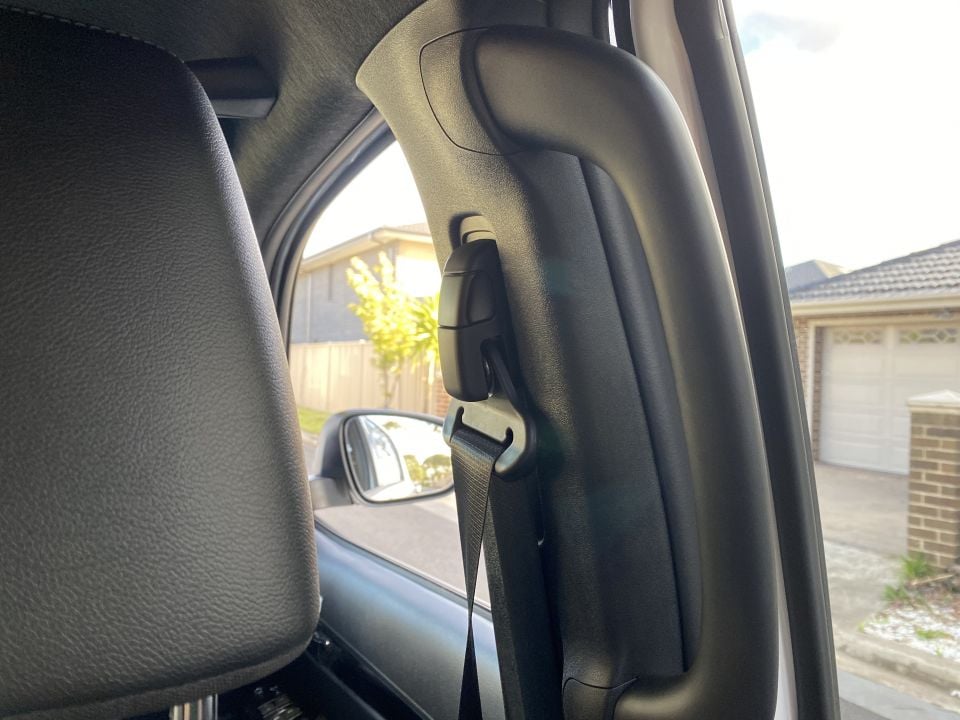
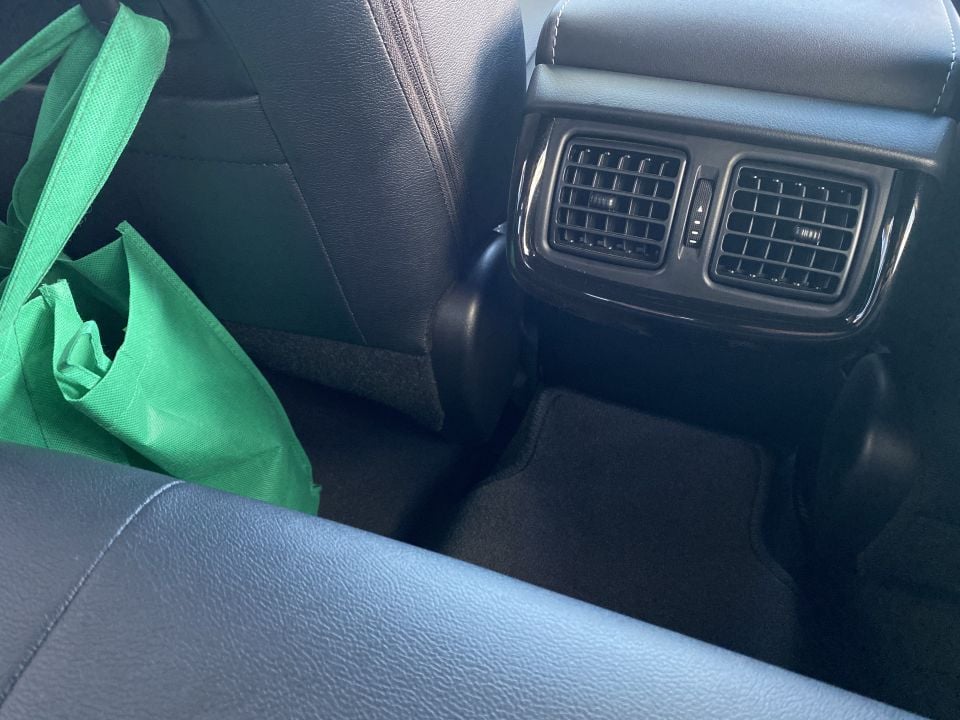
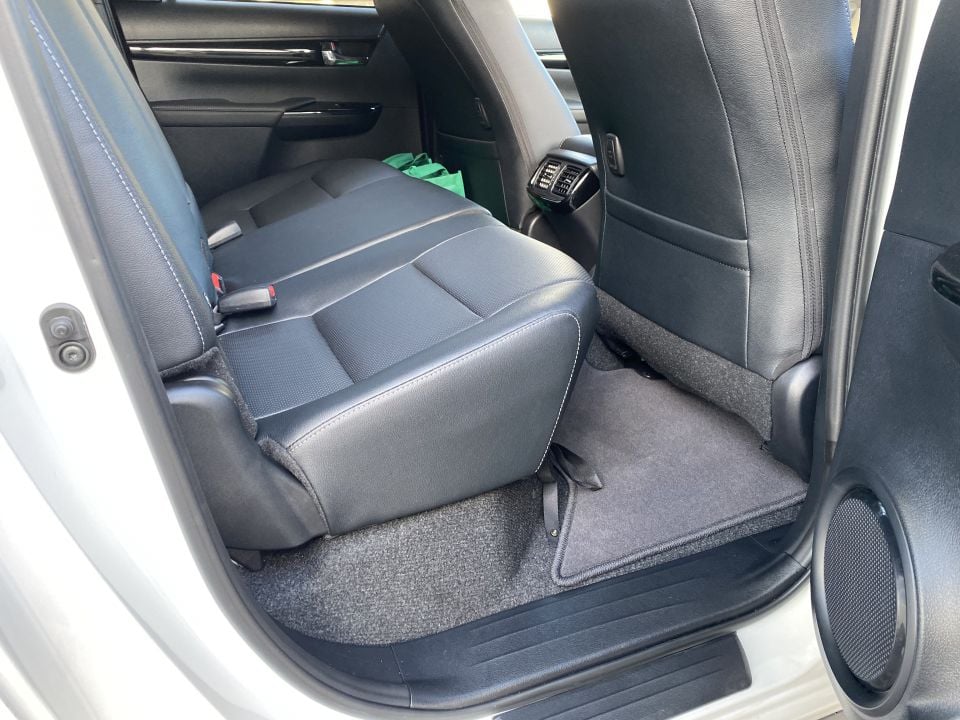
The ventilation has clearly been designed for outback summers, as country buyers in particular demand. The heated seats are also welcome additions for winter mornings heading to the building site at sparrow’s…
The back seats have head and shoulder space for two adults my height (194cm) or below, and offer cupholders, B-pillar grab handles, rear air vents, and a comfortably pitched and padded seat base.
They also have outboard ISOFIX child-seat anchor points and the requisite tether points, situated behind the seat-back. We suggest using a professional installer, because utes can make child-seat fitment a little tricky in my experience.
While the ride quality (to be addressed later) is never as cushy as a road-going SUV, the ‘Lux’s back seats are suitable enough for the Rogue to double as weekend family transport, with one exception: the rigidly fixed overhead grab handles are so positioned to give anyone tall a nice smack in the forehead under braking, if they’re tilted even lightly to the side. Just make them hinged, Toyota…
The tub is a strong point. Some aftermarket covers are fiddly and frankly a pain in the arse. But the Rogue’s rigid cover locks and unlocks with the key fob, has lifting shocks, and the marine carpet deadens sound nicely while acting as a protector. It’s velcroed down, so can be easily removed.
It’s perfect for fishing gear, saddles and the like. Those sturdy black bars are mounted onto the tub floor, not the sides.
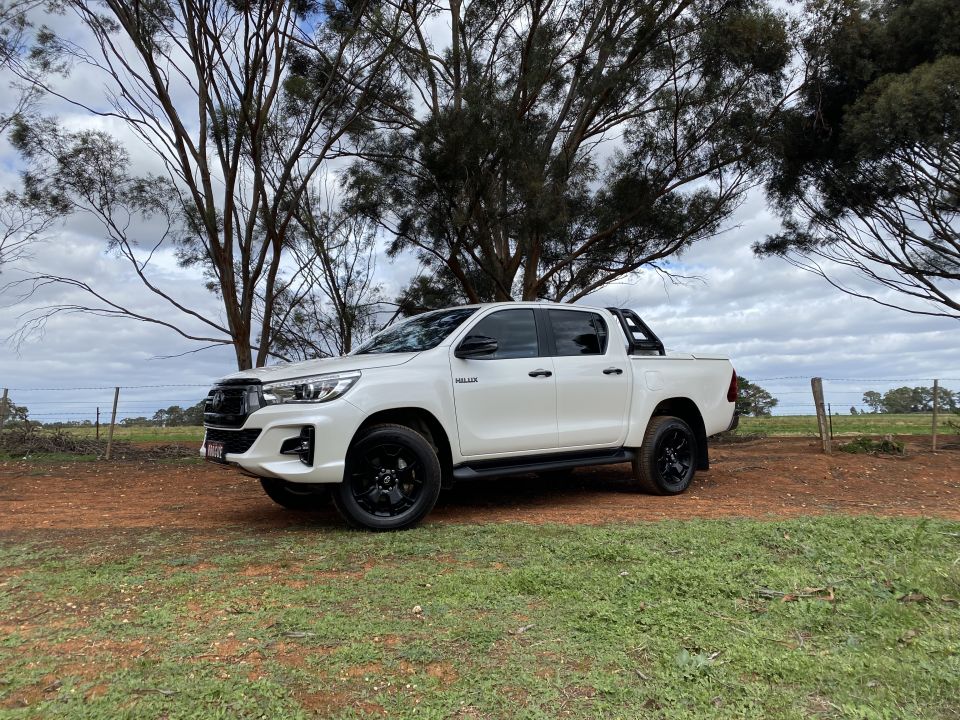

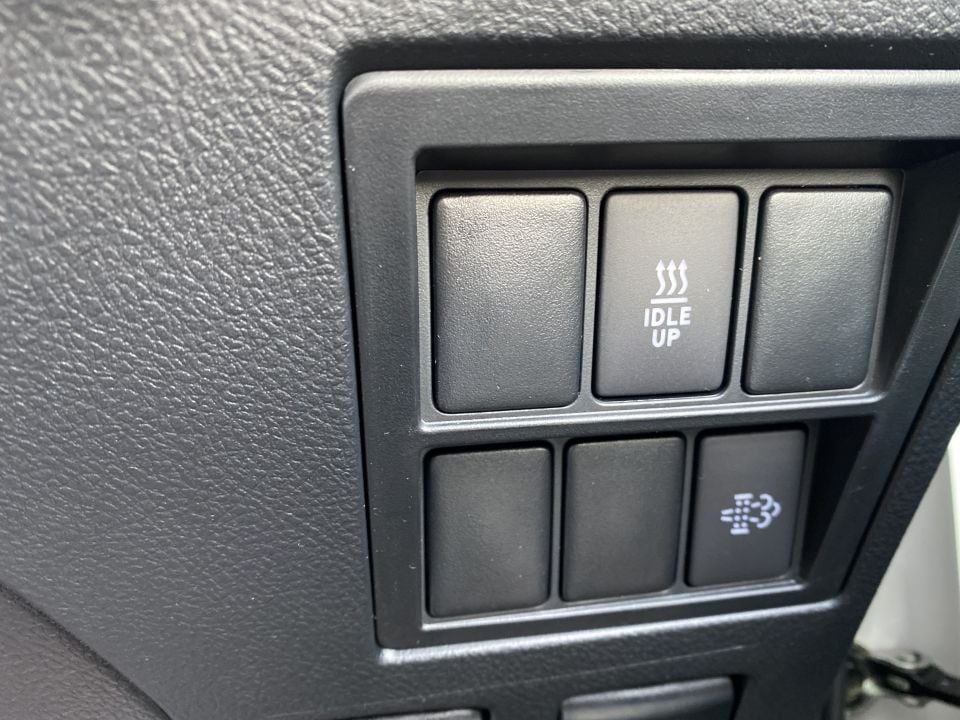

The Toyota HiLux’s engine is a 2.8-litre turbo-diesel making 130kW of peak power and 450Nm of peak torque, available low in the rev band (from 1600rpm through to 2400rpm).
This falls short of the Ranger’s 2.0-litre BiTurbo diesel (157kW and 500Nm) and 3.2-litre five-cylinder (147kW/470Nm) alike, as well as the Navara’s 2.3-litre twin-turbo (140kW/450Nm) and Amarok’s 3.0-litre V6 (mildest tune is 165kW/550Nm).
The 2.8 is mated exclusively in this incarnation to a six-speed automatic transmission, sending torque to the road via a part-time 4×4 system with low-range gearing. There is also a Power mode that sharpens up the throttle response notably.
The 3.2-tonne towing capacity falls short of the 3.5t ceiling for the class leaders (Ram 1500 Hemi V8 excepted), while the fuel economy claim is 8.5L/100km on the combined cycle or 7.1L/100km on a highway stint.
The engine is fitted with a diesel particulate filter, and Toyota fitted an alert and switch that burns away these particulates manually at a suitable operating temperature. The company did this in response to incidences of the DPF clogging up and conking out on drivers who rarely left the city.
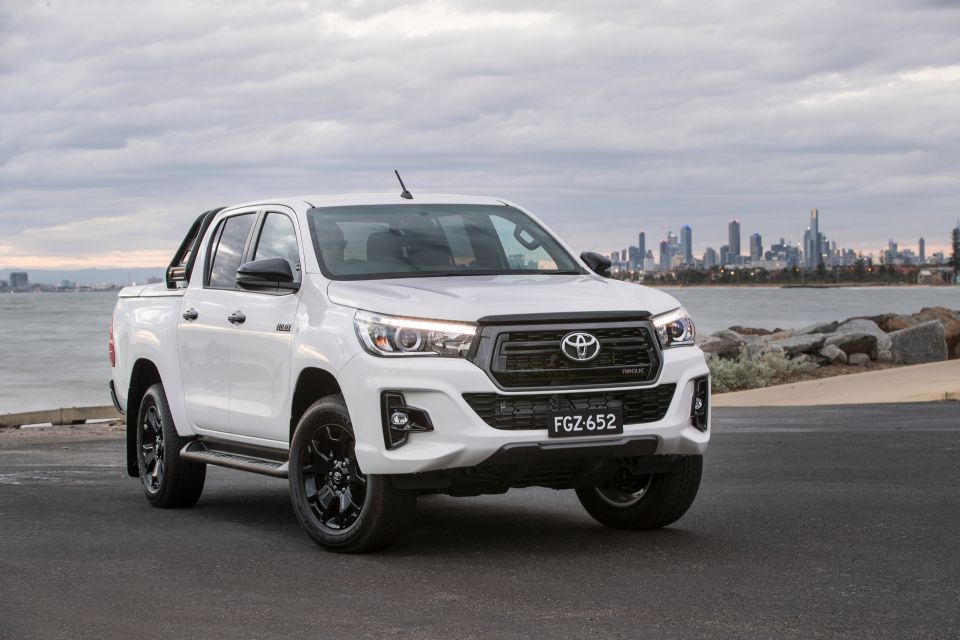

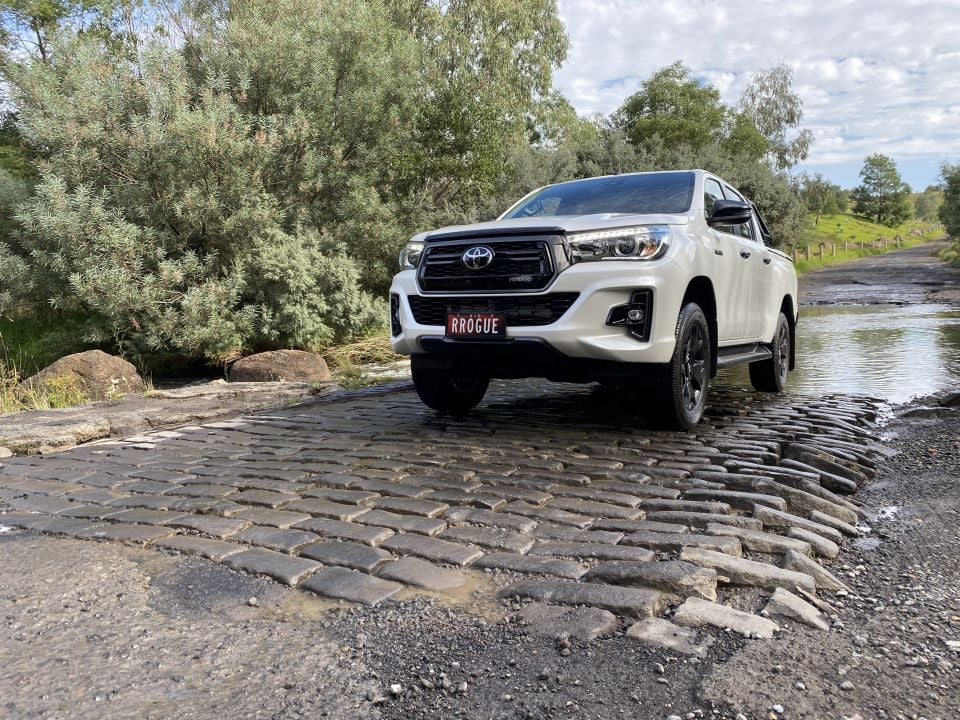
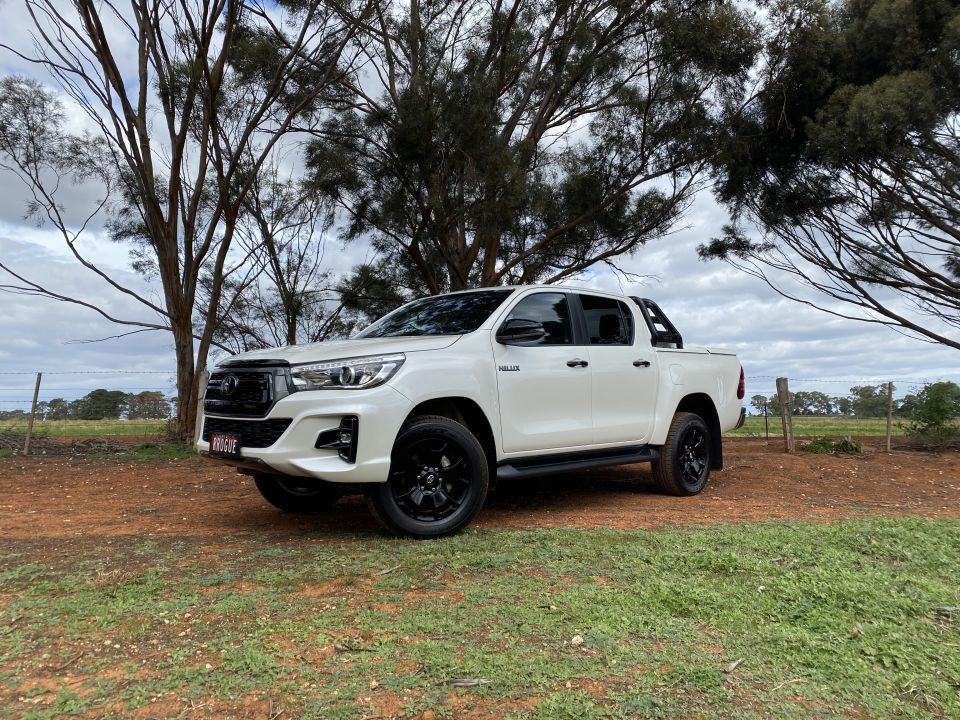
The engine is quite refined, and feels pretty peppy in Power mode, which seems to change the throttle characteristics or power delivery off the line. With a few passengers and some leisure equipment aboard it’ll be fine, though it’s not a class-leader when it comes to brawn under load.
The automatic transmission is unobtrusive despite featuring four fewer ratios than the BiTurbo Ranger’s, which is all one can ask.
I averaged fuel economy on a mixed-cycle driving loop of 11L/100km, which is hardly brilliant.
One really good feature of the Toyota HiLux has always been its rack-and-pinion steering which is well-weighted, with some resistance for off-road feel that doesn’t become ponderous.
Like the SR5, its wheels are wrapped in slightly road-biased 265/80 Bridgestone Dueler H/T rubber. It has the same suspension layout comprising double wishbones up front and leafs/rigid axle at the rear. It also has rear drum brakes, but ventilated discs up front.
There’s no doubt it’ll be an advance for anyone climbing out of a previous-generation load-lugger, particularly when it comes to refinement. However, it’s not as SUV-like as a Ranger, because unless you’ve settled down the rear with a heavy payload you’ll notice some skipping and bouncing.
It never really feels ‘settled’. Which is fine for a workhorse, but this Rogue variant is supposed to be a cushy all-rounder.
Its 2174kg kerb weight is a hefty 129kg greater than the SR5’s, but its GVM remains 3000kg so the payload dips to 826kg including passengers. Its gross combined mass is 5650kg, so you can’t tow the maximum 3.2t (braked) with a full payload simultaneously.
On this occasion I neither loaded the ‘Lux up heavily, or towed anything. But I have lugged 700kg and towed 3.0-tonnes in a HiLux with the same engine several times previously and found it to be a mid-level tower (the D-Max wins for effortless grunt if not pace or refinement), but one of the most composed in the class near payload. Of course, good luck fitting anything too bulky below the tonneau here.
Toyota claims 216mm of clearance, an approach angle of 30 degrees, a departure angle of 20 degrees, and break-over angle of 39 degrees. It has a part-time 4×4 system with low-range gearing and a locking rear diff.
Stay tuned for our off-road review of the Rogue coming later this week. For that reason I’ve focused on pure road and gravel driving in this piece.
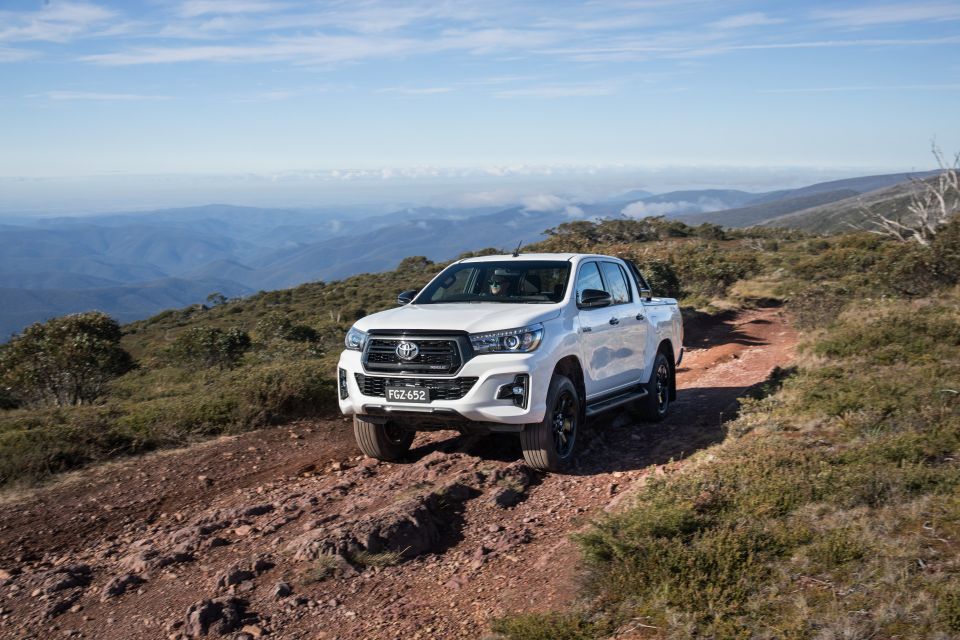
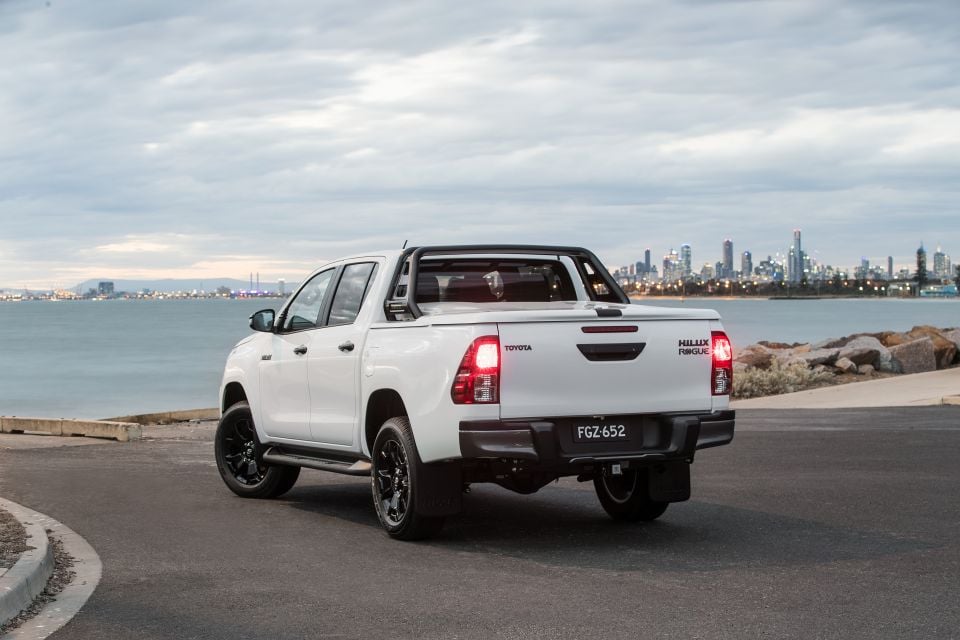
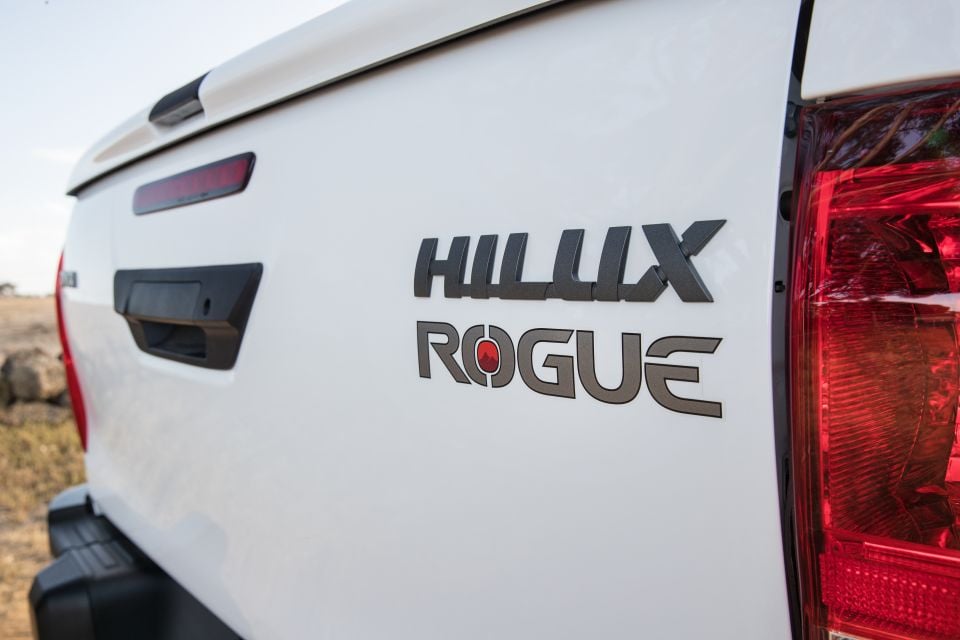
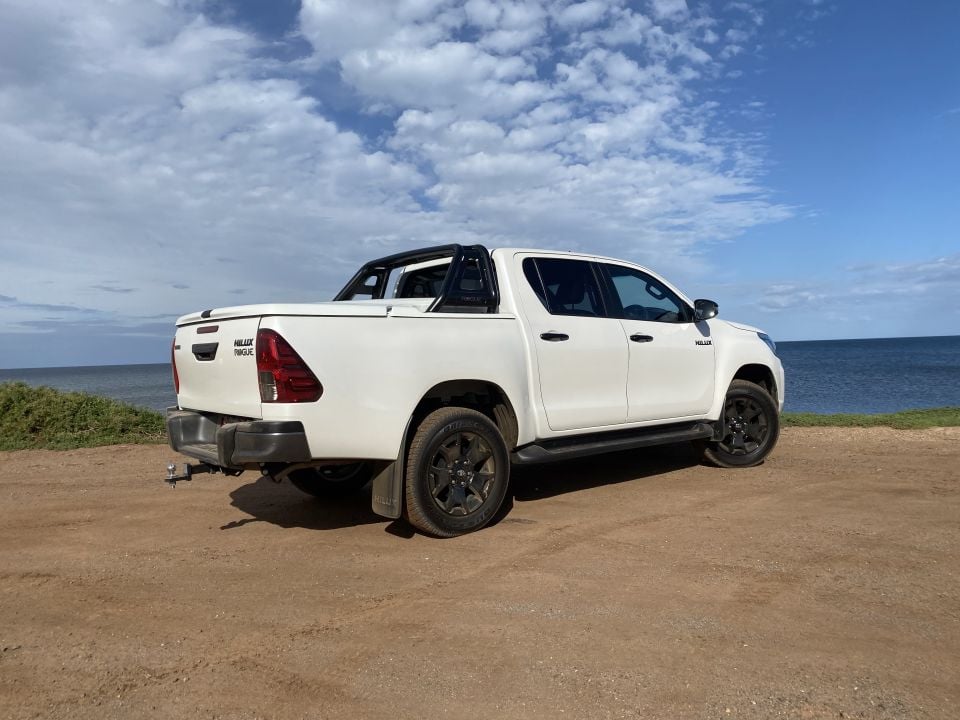
The standard Toyota warranty is five years, with no distance limit.
The service intervals are unfortunately quite short – just six months and 10,000km. However, the first four visits are also capped at a quite affordable $250 a pop.
Toyota also has the nation’s biggest dealer network, especially in regional areas. Comes with the territory of owning 20 per cent market share…
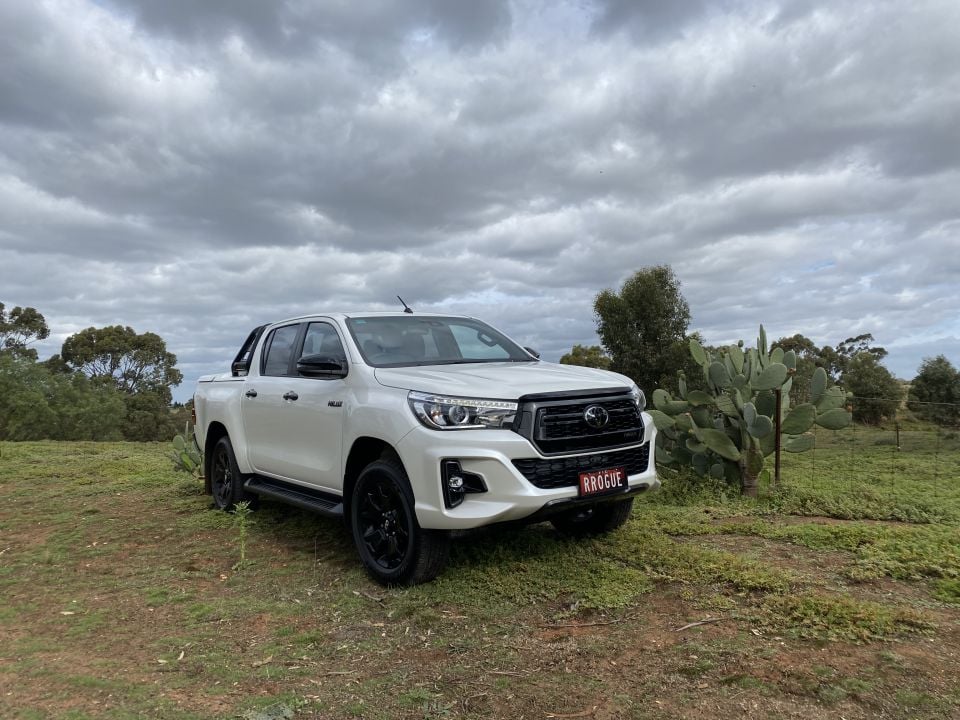
The Toyota HiLux has long been a top-seller without necessarily being a class-topper at much in particular. Instead, it’s simply very competent at most things, and trades on a strong reputation, a vast dealer network across regional and metro Australia, and instant badge recognition earned from decades of consistency.
The HiLux Rogue has some good add-ons, and the convenience of being able to get this out of the box without consulting the aftermarket will no doubt appeal to some. And be anathema to others, such is the nature of the ute market.
I’d argue a Mitsubishi Triton GLS+ offers better value, a Ranger Wildtrak a more comfortable day-to-day ride and sharper infotainment tech, and the Amarok V6 more grunt. The imminent new-generation Isuzu D-Max also looks promising.
Which is not to say the HiLux is unpleasant. Indeed it’s a perfectly serviceable truck with great safety credentials, that fantastic lockable lined tub, bulletproof interior build, and an urban-friendliness that’ll appeal to weekend warriors.
We’d also note that an updated model isn’t too far away – it’ll arrive this year – and we’d expect that might get a more contemporary infotainment system. Whispers suggest Toyota might also be tweaking the engine. Perhaps that’s ammunition to drive a hard bargain on a Rogue?
Where expert car reviews meet expert car buying – CarExpert gives you trusted advice, personalised service and real savings on your next new car.


Ben Zachariah
7 Hours Ago


Matt Campbell
14 Hours Ago


Derek Fung
4 Days Ago


Damion Smy
7 Days Ago


Ben Zachariah
9 Days Ago


James Wong
15 Days Ago